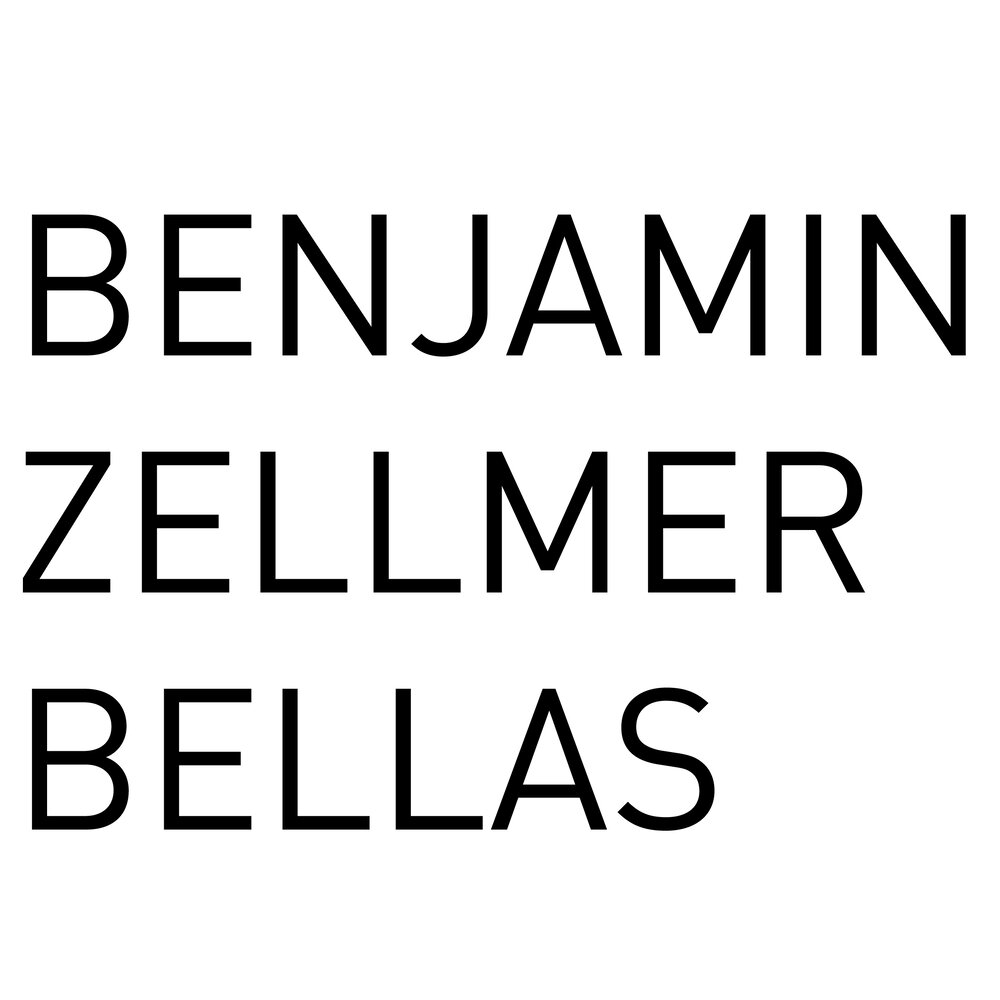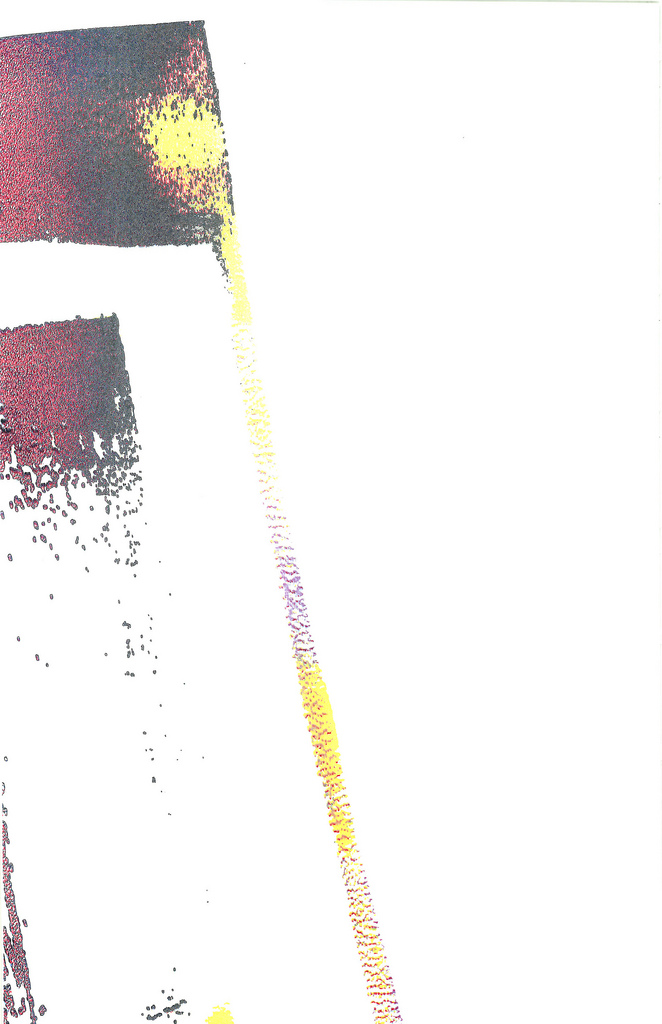A CANON COLOR COPIER IS EMPLOYED TO CONTINUOUSLY REPRODUCE A COPY OF A COPY OF UTAGAWA HIROSHIGE’S CAMELLIAS AND SPARROWS IN FALLING SNOW, UNTIL ARRIVING AT A BLANK PAGE. THE IMAGE IS THEN ENLARGED AND PRINTED VIA A OCÉ COLORWAVE 600.
The Chinese poet Bai Juyi (772-846) wrote some 2,800 poems during his lifetime. Bai’s particularly potent works are poems in which everyday events are illustrated to reveal the effect they had on his inner thoughts. One example is the poem “Pruning Trees” whereby the repetitive act of pruning trees is meant to symbolize clearing one’s mind to reveal that which is truly important in life. Bai is particularly renowned in Japan and regarded as one of the most widely read of all the Chinese poets by the rest of the world, in thanks to his works having been copied and passed from one to the next through various Buddhist temples throughout China.
In 814 Bai Juyi found himself exiled for five years, due in part to his writings. It was a series of poems that Bai had written that shined a light upon the suffering of the public, while simultaneously satirizing the greed of their government officials, that caused him problems. Additionally Bai had written two memorials against a prolonged war the imperial government was currently engaged in. It was not until 819 that Bai was finally summoned to the capital to be placed in a new government position, ending his exile.
According to Suzuki Juzo, the first two lines of Bai Juyi's poem Inquiry of a Stork are scribed on this particular Utagawa Hiroshige (1797-1858) ukiyo-e. Translated the lines read:
Crows and storks fight over something to eat
and sparrows over where to sleep,
You stand there all alone by the pond,
the wind blows and snow piles up.
* * * * *
In 1455 Johannes Gutenberg (1398-1468) published the Gutenberg Bible in Mainz, Germany. This event is seen as ushering in the age of the printed book. Gutenberg's invention of the printing press, and in particular movable type, is widely regarded as the most important event of the modern period. While woodblock printing, rubrication, and engraving were rendered supplemental to Gutenberg's printing process,most handwritten manuscript book-making methodologies were nearly eradicated.
That same year Gutenberg was accused, and convicted, of misusing the funds loaned to him for the production of a "project of books" by his financial backers. He was forced to surrender the control over half of all the printed Bibles and the Bible printing workshop itself. The decision bankrupt Gutenberg and he eventually retreated to Bamberg around 1459 to participate in the printing of another Bible. He remained there until 1462 when he was then exiled to Eltville, where he remained until his death six years later.
Today the Gutenberg Bible is recognized as the most valuable book in the world. Approximately 180 were originally printed, most of those on paper, but some on vellum. At the time of this writing (2011) 47 Bibles are known to still exist, it is estimated that of those only 21 are complete. The remaining 26 are known to have leaves or volumes missing. There are known to be only twelve copies left in existence that were printed on vellum. Of these only four are complete, and one of those is of the New Testament only, making the other 3 the most treasured copies anywhere.
Even more treasured is the Sibyllenbuch fragment. Named after the medieval poem printed upon it, the Sibyllenbuch, the fragment is a partial book leaf that is believed by some to be the first piece of text printed by Gutenberg in 1450. Discovered in 1892 in an old bookbinding in Mainz, Germany, many refer to this fragment as the earliest surviving remnant of any European book printed by movable type.
* * * * *
In 1892 Tsukioka Yoshitoshi, the last great master of ukiyo-e, died. The genre of Japanese woodblock prints persisted for the three previous centuries. From approximately 1600-1900 the art form flourished. Beginning with Hishikawa Moronobu (1618-1694), who can be argued to have developed the mature form of ukiyo-e, through many others to Katsushika Hokusai (1760-1849), who created the most internationally recognized singular ukiyo-e print: The Great Wave off Kanagawa, on through to others still to the aforementioned Utagawa Hiroshige and eventually arriving at Yoshitoshi.
Translated, ukiyo-e literally means: "pictures of the floating world," and is derived from the word ukiyo, meaning "floating world." Asai Ryōi (1612-1691), a writer during Japan's Edo period, wrote of the concept as such:
"... Living only for the moment, turning our full attention to the pleasures of the moon, the snow, the cherry blossoms and the maple leaves; singing songs, drinking wine, diverting ourselves in just floating, floating; ... refusing to be disheartened, like a gourd floating along with the river current: this is what we call the floating world..."
Due to their nature of being easily mass produced, ukiyo-e were quite affordable. This affordability meant that townsmen, who typically did not possess the means to own an original painting, became the main patrons of the prints. Born in 1797 in what is present day Tokyo, Utagawa Hiroshige never lived in financial comfort, even in old age. His prolific output, and resultant widespread fame, directly correlates to the fact that he was poorly paid per series.
* * * * *
"Dating back to 1927 the Océ name is derived from the German words ohne Componente (without component). To make the abbreviation O.C. easier to pronounce, the é was later added, and a trade name was born. In 1920 Louis Van der Grintens started the document-copying activities for the company that would eventually become known as Océ .
Initially the Van der Grintens manufactured blueprint paper, which in the 1920s was commonly used for the reproduction of line originals, such as tracings. The light-sensitive coating on blueprint paper, however, caused great difficulties in copying. Early attempts to correct these problems produced paper that had a longer shelf life but a correspondingly slower development time. With his background in chemistry, Louis soon succeeded in producing paper that overcame these difficulties. It was in 1923, when a discovery by a German firm, Kalle & Co., started the Van der Grintens on a new tack. Kalle introduced an easy and inexpensive way to produce positive copies. Unlike with blueprints, on which white lines are reproduced on blue paper, this process, known as diazo printing, produced colored lines on white paper. Louis van der Grinten quickly improved on the basic process and, in 1926, Van der Grinten introduced its Primulin paper and applied for patents in several countries. Eventually Van der Grinten came up with an improved, semi-dry diazo process - the first product to carry the Océ trademark.
Across the world in 1933, a small laboratory dedicated to making high-quality cameras was set up in a small apartment room in Tokyo. At the time, all high-quality cameras were European with the majority coming from Germany. It was in this small room where work was begun on producing a high-quality Japanese camera, marking the beginning of Canon. In 1934 they eventually succeeded in building a prototype, and the following year, Japan's first-ever 35mm focal-plane-shutter camera was born, along with the Canon brand.
In 1964, Canon entered the office equipment market with the debut of the world's first 10-key electronic calculator. In 1969 the company changed its name from Canon Camera Co., Inc. to Canon Inc, and they took on the challenge of developing Japan's first plain paper copying machine. They introduced this machine in 1970, and by 1982 they had succeeded in creating a personal copying machine based on an all-in-one cartridge system.
By the mid-1990s, the business division system that had been in place since the 1970s was showing signs of wear. Canon also carried debt of more than 840 billion yen, and so in 1996 the Excellent Global Corporation Plan was launched. Transforming the corporate mindset from partial to total optimization and from a focus on sales to a focus on profits, the new plan was the start of what characterizes today's Canon. In November of 2009 Canon announced plans to acquire Océ, and brought them into the Canon Group four months later in March of 2010."
* * * * *
In 1982 I was in first grade. On at least one occasion during recess this same year, while the other students were playing in the gymnasium, I would write and rewrite disciplinary sentences from classics on the chalkboard for my misbehavior(s). I remember this because I can vividly recall observing out of the windows while the snow fell and accumulated in large chunks, so did the small powdery chunks of white chalk fall and accumulate below me with every stroke.
when the snow fell, it changed the view outside in two ways.
It obscured the landscape seen through the window
and it distorted every surface of the landscape on which it collected.
When my hand would eventually fatigue from tracing over the same movements, the letters and then subsequently the sentences changed shape. While outside the snow collected on each tree, each branch, each leaf, exaggerating their shapes with each flake. The landscape becoming ever more distorted through the amplification of layer after layer of its form.
the scene is as overblown as the poster sized Norman Rockwell prints that I remember populating that classroom
and I can't remember if this vivid recollection is actually true
if this instance actually happened
happened at all
or happened this way
but I remember it in this way
I've run the imagery through my mind so many times that it has become seated there as if it were a memory
the truth gets lost in the repetition
the truth gets lost in the repetition
the truth gets lost in the repetition
this process is me writing those sentences in that first grade classroom
this process is me watching the snowfall from that first grade classroom
I see it, and now you see it too
you are being taught it
these lessons on the malleability of memory
the malleability of history
the malleability of everything
snow can be a noun
snow can be a verb
snow can be noise
snow can be an accumulated loss
as in: the snowing over of a memory
snow can be a verb phrase
to be snowed under is to overwhelm with a larger amount of something than can be conveniently dealt with, especially with paperwork
to be overwhelmed with text, with information, with meaning.
regardless of when or how the snow falls, it changes the viewer in two ways.
It obscures the landscape seen through the window
and it distorts every surface of the landscape on which it collects
You stand there all alone by the window,
the wind blows and snow piles up
[INKJET PRINTS - performance/ print series]
2011






